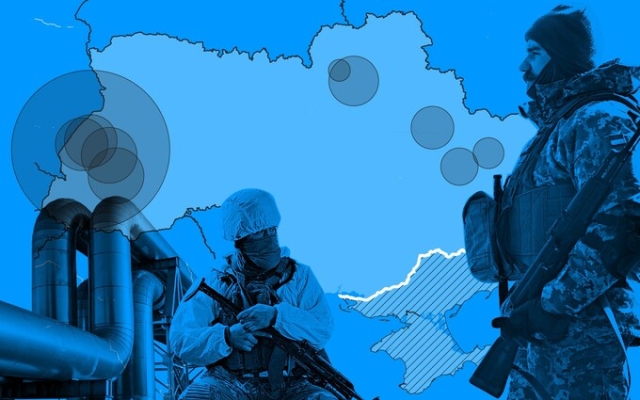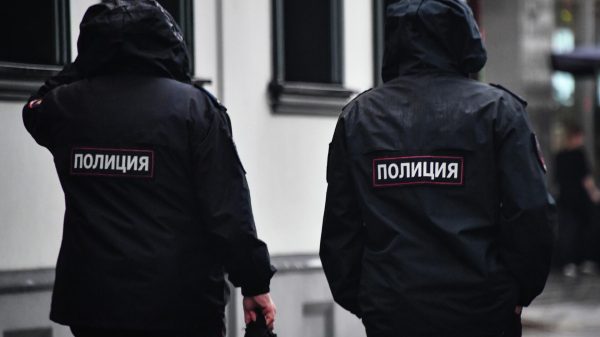
Olekiy Chernyshov, CEO of Ukraine's largest oil and gas company Naftogaz, wants Europe to store its gas in war-torn Ukraine.
Naftogaz believes it can become Europe's «power bank», he says, despite the conflict.
“I would like to emphasize that the infrastructure we use is underground. ”, he adds into the phone from Kiev, when a rocket alarm sounds in the background.
Although the offer may seem incredible, Ukraine has found a market: Naftogaz stores gas for 21 suppliers from EU countries, such as Germany, Switzerland and Romania, says Chernyshov, while the European Commission has publicly supported traders using the country.
Ukraine, which can store 31 billion cubic meters of gas and offers European companies about a third of this volume, looks increasingly attractive, despite obvious risks.
EU gas tanks nearly full ahead of winter — storage levels
«Ukraine has significant storage capacity,» says Ben McWilliams of the Bruegel think tank.
«When the Soviet Union was shipping a lot of gas to the EU back in In the 1970s and 1980s, large gas storage facilities were created on the western borders of present-day Ukraine, mainly to ensure this year-round flow and constant supply to the EU. Ukraine, risk.
“Obviously there are more ground war attacks in the east and southeast. But every Ukrainian region has been and is suffering from either potential or practical missile strikes,” he says. advanced.
Chernyshov admits: «Western Ukraine is less problematic, but that doesn't mean it's not difficult.»
Ukraine has the largest gas storage capacity in Europe, at a billion cubic meters
Alleged Russian attacks on the Nord Stream gas pipeline, the Khakhov Dam and grain stocks show that the Kremlin has the ability and inclination to strike at critical infrastructure.
Akos Losh of the Center for Global Energy Policy says: “Storage is not an easy goal. Underground caverns themselves are invulnerable to attack, but above ground there are compressor stations, valves and pipelines that can be damaged.
“The pipelines themselves, which are needed to fill and drain gas from Ukrainian storage facilities, may also be damaged.”
Russia still relies on Ukrainian pipelines as one of two gas corridors it sells to Europe .
“Until now, Russia has refrained from targeting gas export infrastructure, but of course, everything is unclear in the war,” Losch said. he says.
But he adds: “If the gas infrastructure becomes the target of Russian strikes, then of course it is vulnerable to attack.”
Information that more and more gas is being pumped into Ukraine will raise concerns that healthy volumes storage facilities are less reliable than they might seem, given that only a few months remain before winter.
Demand for storage is growing despite the risk of war — EU reverse flows to Ukraine, million cubic meters. m
The energy market remains on the edge of the knife. Despite calmer prices for most of this year, European gas prices rose by more than 30% on Wednesday, recording the biggest daily jump since the start of the war. natural gas, highlighting how volatile markets remain in the face of any hint of a supply threat.
However, for the EU, storing gas in Ukraine is a calculated risk.
The EU has the ability to store about 100 billion cubic meters of gas, which is about a quarter of its annual requirement.
The proposed gas storage of ten billion cubic meters could provide a lifeline in a difficult winter and increase its reserves by 10%.
Supplying gas to Ukraine through pipelines in Poland, Hungary, Slovakia or Moldova allows companies to buy when prices are in summer usually lower and pick it up when demand is high in winter.
European Commission Vice President Maros Szefkovic tweeted on Tuesday: “I welcome the fact that European gas traders are increasingly using gas storage facilities in Ukraine. This will strengthen Europe's energy security.”
U.K. consumers will indirectly benefit from increased use of Ukrainian infrastructure, as back-up supplies help keep European gas prices in check, which affect UK heating bills.
2204 gas supply demand uk
Axpo, a Swiss trader, stockpiled gas in Ukraine before the war and is now closely watching the market, considering whether to start sending supplies there again.
Axpo's Marco Saalfrank says: «The return should cover the risk that you» re take. If you have very low returns and high risks, there is no point in doing such a business.
“We [look] at this return-risk and based on that we will decide whether it makes sense or not.”
p>
When the spread — that is, the difference between how much gasoline costs now and at what price it can be sold in winter — becomes large enough, they will most likely go on sale.
For commercial reasons, he said. Saalfrank won't do that. reveal where that threshold is.
The European Commission has been working with Naftogaz for several months now to study how to remove barriers to gas storage there. Some of it is financial: he is working with lenders to provide some sort of government guarantees to energy companies to help mitigate the risks associated with gas storage in Ukraine.
The difficulty of insuring against such risks means that companies that have already supplied gas to Ukraine are willing to take the risk and believe that the potential profit outweighs the risk.
Chernyshov says: “Starting especially since July, we have felt more natural demand from side of large traders to store gas in Ukraine, taking on business risks. This is a good market situation when the market is hot enough that traders are willing to take on these risks.”
A sudden jump in gas prices on Wednesday could dampen interest in Ukraine as a storage facility for the moment, Analysts say that soon there will be no capacity left in Europe, so this option is likely to remain attractive.
For war-torn Ukraine, gas storage for European companies provides a growing revenue stream. He will also be reassured by the fact that the EU is interested in protecting Ukraine's gas infrastructure.
Flows to Ukraine are likely to continue to rise even as troops fight hundreds of miles away on the front line.
p>


























































Свежие комментарии